A lot of the information on this page is from The Ancient Egypt Site (AES below), the site Ancient Egypt (AE below), and from Wikipedia. These sites have a lot of information and consistent time lines, although they differ. The hieroglyphic names are from both the AES and AE website. The times are all from the AE website.
From the Middle Kingdom of Egypt entry in Wikipedia:
The Middle Kingdom of Egypt (also known as The Period of Reunification) is the period in the history of ancient Egypt following a period of political division known as the First Intermediate Period. The Middle Kingdom lasted from approximately 2040 to 1782 BCE, stretching from the reunification of Egypt under the reign of Mentuhotep II in the 11th Dynasty to the end of the 12th Dynasty. The kings of the 11th Dynasty ruled from Thebes and the kings of the 12th Dynasty ruled from el-Lisht.
The concept of the Middle Kingdom as one of three "golden ages" was coined in 1845 by German Egyptologist Baron von Bunsen, and its definition evolved significantly throughout the 19th and 20th centuries. Some scholars also include the 13th Dynasty of Egypt wholly into this period, in which case the Middle Kingdom would end around 1650 BCE, while others only include it until Merneferre Ay around 1700 BCE, last king of this dynasty to be attested in both Upper and Lower Egypt. During the Middle Kingdom period, Osiris became the most important deity in popular religion. The Middle Kingdom was followed by the Second Intermediate Period of Egypt, another period of division that involved foreign invasions of the country by the Hyksos of West Asia.
After the collapse of the Old Kingdom, Egypt entered a period of weak pharaonic power and decentralization called the First Intermediate Period. Towards the end of this period, two rival dynasties, known in Egyptology as the 10th and 11th Dynasties, fought for control of the entire country. The Theban 11th Dynasty only ruled southern Egypt from the First Cataract to the Tenth Nome of Upper Egypt. To the north, Lower Egypt was ruled by the rival 10th Dynasty from Herakleopolis. The struggle was to be concluded by Mentuhotep II, who ascended the Theban throne in 2055 BCE. During Mentuhotep II's fourteenth regnal year, he took advantage of a revolt in the Thinite Nome to launch an attack on Herakleopolis, which met little resistance. After toppling the last rulers of the 10th Dynasty, Mentuhotep began consolidating his power over all of Egypt, a process which he finished by his 39th regnal year. For this reason, Mentuhotep II is regarded as the founder of the Middle Kingdom.
Mentuhotep II commanded petty campaigns south as far as the Second Cataract in Nubia, which had gained its independence during the First Intermediate Period. He also restored Egyptian hegemony over the Sinai region, which had been lost to Egypt since the end of the Old Kingdom. To consolidate his authority, he restored the cult of the ruler, depicting himself as a god in his own lifetime, wearing the headdresses of Amun and Min. He died after a reign of 51 years and passed the throne to his son, Mentuhotep III.
Mentuhotep III reigned for only twelve years, during which he continued consolidating Theban rule over the whole of Egypt, building a series of forts in the eastern Delta region to secure Egypt against threats from Asia. He also sent the first expedition to Punt during the Middle Kingdom, using ships constructed at the end of Wadi Hammamat, on the Red Sea. Mentuhotep III was succeeded by Mentuhotep IV, whose name, significantly, is omitted from all ancient Egyptian king lists. The Turin Papyrus claims that after Mentuhotep III came "seven kingless years". Despite this absence, his reign is attested from a few inscriptions in Wadi Hammamat that record expeditions to the Red Sea coast and to quarry stone for the royal monuments. The leader of this expedition was his vizier Amenemhat, who is widely assumed to be the future pharaoh Amenemhet I, the first king of the 12th Dynasty.
Mentuhotep IV's absence from the king lists has prompted the theory that Amenemhet I usurped his throne. While there are no contemporary accounts of this struggle, certain circumstantial evidence may point to the existence of a civil war at the end of the 11th Dynasty. Inscriptions left by one Nehry, the Haty-a of Hermopolis, suggest that he was attacked at a place called Shedyet-sha by the forces of the reigning king, but his forces prevailed. Khnumhotep I, an official under Amenemhet I, claims to have participated in a flotilla of twenty ships sent to pacify Upper Egypt. Donald Redford has suggested these events should be interpreted as evidence of open war between two dynastic claimants. What is certain is that, however he came to power, Amenemhet I was not of royal birth.
From the 12th Dynasty onwards, pharaohs often kept well-trained standing armies, which included Nubian contingents. These formed the basis of larger forces that were raised for defense against invasion, or expeditions up the Nile or across the Sinai. However, the Middle Kingdom was basically defensive in its military strategy, with fortifications built at the First Cataract of the Nile, in the Delta and across the Sinai Isthmus.
Early in his reign, Amenemhet I was compelled to campaign in the Delta region, which had not received as much attention as Upper Egypt during the 11th Dynasty. Also, he strengthened defenses between Egypt and Asia, building the Walls of the Ruler in the East Delta region. Perhaps in response to this perpetual unrest, Amenemhat I built a new capital for Egypt in the north, known as Amenemhet It Tawy, or Amenemhet, Seizer of the Two Lands. The location of this capital is unknown, but is presumably near the city's necropolis, the present-day el-Lisht. Like Mentuhotep II, Amenemhet bolstered his claim to authority with propaganda. In particular, the Prophecy of Neferty dates to about this time, which purports to be an oracle of an Old Kingdom priest, who predicts a king, Amenemhet I, arising from the far south of Egypt to restore the kingdom after centuries of chaos.
Propaganda notwithstanding, Amenemhet never held the absolute power commanded in theory by the Old Kingdom pharaohs. During the First Intermediate Period, the governors of the nomes of Egypt, nomarchs, gained considerable power. Their posts had become hereditary, and some nomarchs entered into marriage alliances with the nomarchs of neighboring nomes. To strengthen his position, Amenemhet required registration of land, modified nome borders, and appointed nomarchs directly when offices became vacant, but acquiesced to the nomarch system, probably to placate the nomarchs who supported his rule. This gave the Middle Kingdom a more feudal organization than Egypt had before or would have afterward.
In his twentieth regnal year, Amenemhat established his son Senusret I as his coregent, beginning a practice which would be used repeatedly throughout the rest of the Middle Kingdom and again during the New Kingdom. In Amenemhet's thirtieth regnal year, he was presumably murdered in a palace conspiracy. Senusret, campaigning against Libyan invaders, rushed home to Itjtawy to prevent a takeover of the government. During his reign, Senusret continued the practice of directly appointing nomarchs, and undercut the autonomy of local priesthoods by building at cult centers throughout Egypt. Under his rule, Egyptian armies pushed south into Nubia as far as the Second Cataract, building a border fort at Buhen and incorporating all of Lower Nubia as an Egyptian colony. To the west, he consolidated his power over the Oases, and extended commercial contacts into Syria-Palestine as far as Ugarit. In his 43rd regnal year, Senusret appointed Amenemhet II as junior coregent, before dying in his 46th.
The reign of Amenemhat II has been often characterized as largely peaceful, but records of his genut, or daybooks, have cast doubt on that assessment. Among these records, preserved on temple walls at Tod and Memphis, are descriptions of peace treaties with certain Syrio-Palestinian cities, and military conflict with others. To the south, Amenemhet sent a campaign through lower Nubia to inspect Wawat. It does not appear that Amenemhet continued his predecessors' policy of appointing nomarchs, but let it become hereditary again. Another expedition to Punt dates to his reign. In his 33rd regnal year, he appointed his son Senusret II coregent.
Evidence for the military activity of any kind during the reign of Senusret II is non-existent. Senusret instead appears to have focused on domestic issues, particularly the irrigation of the Faiyum. This multi-generational project aimed to convert the Faiyum oasis into a productive swath of farmland. Senusret eventually placed his pyramid at the site of el-Lahun, near the junction of the Nile and the Fayuum's major irrigation canal, the Bahr Yussef. He reigned only fifteen years, which explains the incomplete nature of many of his constructions. His son Senusret III succeeded him.
Senusret III was a warrior-king, often taking to the field himself. In his sixth year, he re-dredged an Old Kingdom canal around the First Cataract to facilitate travel to Upper Nubia. He used this to launch a series of brutal campaigns in Nubia in his sixth, eighth, tenth, and sixteenth years. After his victories, Senusret built a series of massive forts throughout the country to establish the formal boundary between Egyptian conquests and unconquered Nubia at Semna. The personnel of these forts were charged to send frequent reports to the capital on the movements and activities of the local Medjay natives, some of which survive, revealing how tightly the Egyptians intended to control the southern border. Medjay were not allowed north of the border by ship, nor could they enter by land with their flocks, but they were permitted to travel to local forts to trade. After this, Senusret sent one more campaign in his 19th year, but turned back due to abnormally low Nile levels, which endangered his ships. One of Senusret's soldiers also records a campaign into Palestine, perhaps against Shechem, the only reference to a military campaign against a location in Palestine from the entirety of Middle Kingdom literature.
Domestically, Senusret has been given credit for an administrative reform which put more power in the hands of appointees of the central government, instead of regional authorities. Egypt was divided into three water, or administrative divisions: North, South, and Head of the South (perhaps Lower Egypt, most of Upper Egypt, and the nomes of the original Theban kingdom during the war with Herakleopolis, respectively). Each region was administrated by a Reporter, Second Reporter, some kind of council (the Djadjat), and staff of minor officials and scribes. The power of the nomarchs seems to drop off permanently during his reign, which has been taken to indicate that the central government had finally suppressed them, though there is no record that Senusret ever took direct action against them.
Senusret III left a lasting legacy as a warrior pharaoh. His name was Hellenized by later Greek historians as Sesostris, a name which was then given to a conflation of Senusret and several New Kingdom warrior pharaohs. In Nubia, Senusret was worshiped as a patron God by Egyptian settlers. The duration of his reign remains something of an open question. His son Amenemhet III began reigning after Senusret's 19th regnal year, which has been widely considered Senusret's highest attested date. However, a reference to a year 39 on a fragment found in the construction debris of Senusret's mortuary temple has suggested the possibility of a long coregency with his son.
The reign of Amenemhat III was the height of the Middle Kingdom's economic prosperity. His reign is remarkable for the degree to which Egypt exploited its resources. Mining camps in the Sinai, which had previously been used only by intermittent expeditions, were operated on a semi-permanent basis, as evidenced by the construction of houses, walls, and even local cemeteries. There are 25 separate references to mining expeditions in the Sinai, and four to expeditions in Wadi Hammamat, one of which had over two thousand workers. Amenemhet reinforced his father's defenses in Nubia and continued the Faiyum land reclamation project. After a reign of 45 years, Amenemhet III was succeeded by Amenemhet IV, whose nine-year reign is poorly attested. Clearly by this time, dynastic power had begun to weaken, for which several explanations have been proposed. Contemporary records of the Nile flood levels indicate that the end of the reign of Amenemhet III was dry, and crop failures may have helped to destabilize the dynasty. Further, Amenemhet III had an inordinately long reign, which tends to create succession problems. The latter argument perhaps explains why Amenemhet IV was succeeded by Sobekneferu, the first historically attested female king of Egypt. Sobekneferu ruled no more than four years, and as she apparently had no heirs, when she died the 12th Dynasty came to a sudden end as did the Golden Age of the Middle Kingdom.
After the death of Sobeknefru, the throne may have passed to Sekhemre Khutawy Sobekhotep, though in older studies Wegaf, who had previously been the Great Overseer of Troops, was thought to have reigned next. Beginning with this reign, Egypt was ruled by a series of ephemeral kings for about ten to fifteen years. Ancient Egyptian sources regard these as the first kings of the 13th Dynasty, though the term dynasty is misleading, as most kings of the 13th Dynasty were not related. The names of these short-lived kings are attested on a few monuments and graffiti, and their succession order is only known from the Turin Canon, although even this is not fully trusted.
After the initial dynastic chaos, a series of longer reigning, better-attested kings ruled for about fifty to eighty years. The strongest king of this period, Neferhotep I, ruled for eleven years and maintained effective control of Upper Egypt, Nubia, and the Delta, with the possible exceptions of Xois and Avaris. Neferhotep I was even recognized as the suzerain of the ruler of Byblos, indicating that the 13th Dynasty was able to retain much of the power of the 12th Dynasty, at least up to his reign. At some point during the 13th Dynasty, Xois and Avaris began governing themselves, the rulers of Xois being the 14th Dynasty, and the Asiatic rulers of Avaris being the Hyksos of the 15th Dynasty. According to Manetho, this latter revolt occurred during the reign of Neferhotep's successor, Sobekhotep IV, though there is no archaeological evidence. Sobekhotep IV was succeeded by the short reign of Sobekhotep V, who was followed by Wahibre Ibiau, then Merneferre Ai. Wahibre Ibiau ruled ten years, and Merneferre Ai ruled for twenty-three years, the longest of any 13th Dynasty king, but neither of these two kings left as many attestations as either Neferhotep of Sobekhotep IV. Despite this, they both seem to have held at least parts of Lower Egypt. After Merneferre Ai, however, no king left his name on any object found outside the south. This begins the final portion of the 13th Dynasty when southern kings continue to reign over Upper Egypt. But when the unity of Egypt fully disintegrated, the Middle Kingdom gave way to the Second Intermediate Period.
Following is the list of Egyptian Pharaohs as well as I could determine it:
All pictures are © Dr. Günther Eichhorn, unless otherwise noted.
| Name of Pharaoh | Dates | Birth Name | Coronation Name | Horus Name | Comment |
|---|---|---|---|---|---|
| (from The Ancient Egypt Site and Ancient Egypt) | |||||
Middle Kingdom (AES Wiki ) | 2130 - 1685 BCE | ||||
11th Dynasty (cont'd) (AES Wiki AE) | 2134 - 1983 BCE | ||||
| Mentuhotep II Nebhepetre (AES Wiki) | 2049 - 1999 BCE | ||||
| Mentuhotep III (AES Wiki) | 1999 - 1987 BCE | ||||
| Mentuhotep IV (AES Wiki) | 1987 - 1983 BCE | ||||
| Intef Kakare | n/a | n/a | |||
| Iibkhenetre | n/a | n/a | |||
| Segerseni | n/a | n/a | |||
12th Dynasty (AES Wiki AE) | 1983 - 1778 BCE | ||||
| Amunemhat I (AES Wiki) | 1983 - 1953 BCE | ||||
| Sesostris I (Senwosret I) (AES Wiki) | 1963 - 1916 BCE | ||||
| Amunemhat II (AES Wiki) | 1919 - 1885 BCE | ||||
| Sesostris II (Senwosret II) (AES Wiki) | 1888 - 1878 BCE | ||||
| Sesostris III (Senwosret III) (AES Wiki) | 1879 - 1840 BCE | ||||
| Amunemhat III (AES Wiki) | 1840 - 1793 BCE | ||||
| Amunemhat IV (AES Wiki) | 1794 - 1782 BCE | ||||
| Nefrusobek (AES Wiki) | 1782 - 1778 BCE | Second of the female Pharaohs | |||
13th Dynasty (AES Wiki AE) | 1776 - 1625 BCE | ||||
| Sekhemre Khutawi Sobekhotep I (Ugaf) (Wiki) | 1776 - 1774 BCE | ||||
| Amunemhat Senbuf (Wiki) | 1773 - 1768 BCE | ||||
| Nerikare (Wiki) | n/a | n/a | n/a | ||
| Sekhemre Khutawi (Wiki) | 1767 - 1761 BCE | n/a | n/a | ||
| Sekhemkare Amunemhat V (Wiki) | 1761 - 1758 BCE | ||||
| Ameni Qemau (Wiki) | 1758 - 1757 BCE | n/a | n/a | ||
| Iufeni (Wiki) | 1756 BCE | n/a | n/a | ||
| Amunemhat VI (Wiki) | 1756 - 1750 BCE | ||||
| Semenkare (Nebnun) (Wiki) | 1750 - 1748 BCE | n/a | |||
| Hotepibre Qemau Siharnedjheritef (Wiki) | 1748 - 1745 BCE | n/a | |||
| Sewadjkare (Wiki) | 1745 - 1743 BCE | n/a | n/a | ||
| Nedjemibre (Wiki) | 1742 BCE | n/a | n/a | ||
| Khaankhre Sobekhotep II (Wiki) | 1741 - 1738 BCE | ||||
| Reniseneb (Wiki) | 1736 BCE | n/a | n/a | ||
| Hor I (Wiki) | 1736 - 1731 BCE | ||||
| Sekhemrekhutawy Khabaw (Wiki) | n/a | n/a | n/a | ||
| Djedkheperew (Wiki) | n/a | n/a | n/a | ||
| Sebkay (Wiki) | n/a | n/a | n/a | ||
| Amunemhat VII Kay (Sedjefakara) (Wiki) | 1731 - 1724 BCE | ||||
| Khutawyre Wegaf (Wiki) | |||||
| Userkare Khendjer (Wiki) | 1718 - 1712 BCE | ||||
| Smenkhkare Imyremeshaw (Wiki) | 1712 - 1710 BCE | n/a | |||
| Sehetepkare Intef (Antef) IV (Wiki) | 1709 BCE | n/a | |||
| Seth I | 1708 BCE | n/a | n/a | ||
| Ibi II | n/a | n/a | |||
| Aakeni | n/a | n/a | |||
| Sekhemresewadjtawy Sobekhotep III (Wiki) | 1708 - 1705 BCE | ||||
| Khasekhemre Neferhotep I (Wiki) | 1705 - 1694 BCE | ||||
| Menwadjre Sihathor (Wiki) | 1694 BCE | n/a | |||
| Khaneferre Sobekhotep IV (Wiki) | 1693 - 1685 BCE | ||||
|
|
|
Second Intermediate Period
|
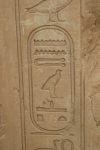
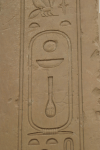
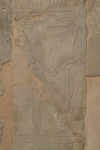
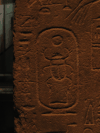
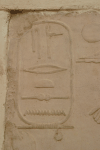
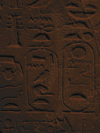
This page contains 6 pictures
Here are the links to the other pages on Egypt:






Page last updated on Tue Nov 2 17:23:37 2021 (Mountain Standard Time)
Egypt - Pharaohs of the Middle Kingdom - 2130 - 1624 BCE on iac35.guenther-eichhorn.com